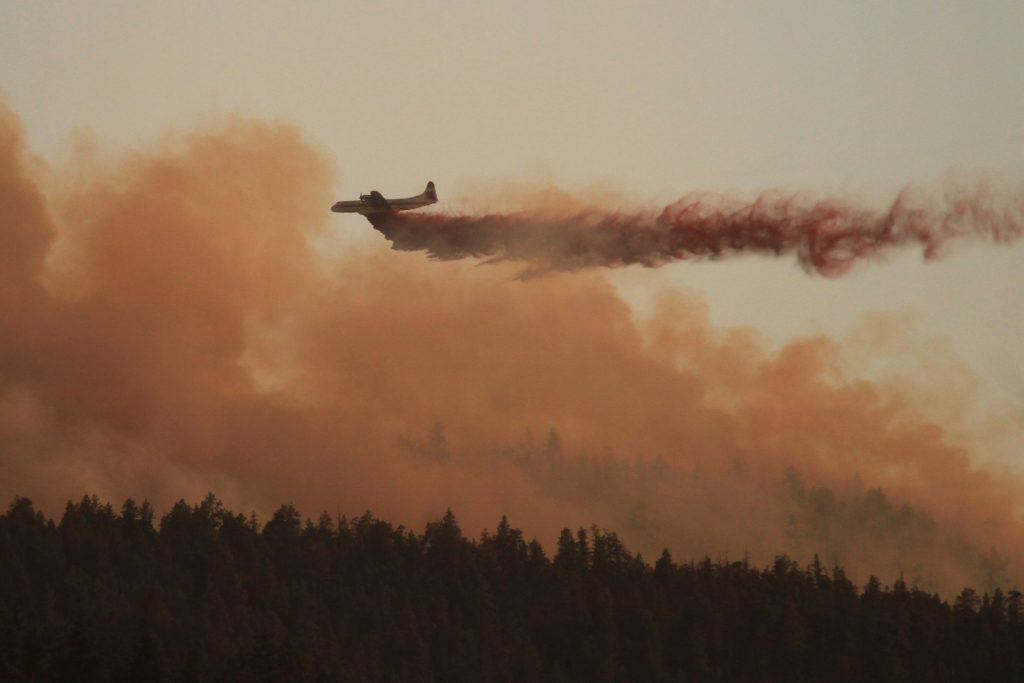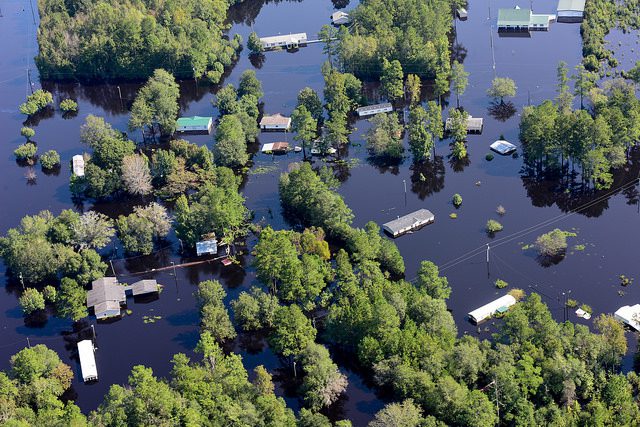A friend from British Columbia was in Ottawa for work recently. Pretty quickly the conversation came around to the summer of forest fires in BC. He looked seriously shell-shocked talking about it, shaking his head at how bad the fires and smoke were in the province for much of the summer. After we parted, I reflected that last summer was also considered the worst wildfire season ever—until this summer.

This past weekend I had no electricity for two and a half days because a tornado ripped through Ottawa destroying power lines, as well as homes, forests, and vehicles. In all 150 thousand homes lost power for some portion of the weekend.
As of last week the threats to the Carolinas from Hurricane Florence had not subsided, with floodwaters still rising. It’s just the beginning of hurricane season in the Atlantic but it follows another brutal summer of climate-related disasters in Canada and abroad. Typhoon Mangkhut recently swept across the Philippines in what seems like an annual parade of superstorms battering the island nation. Also in the news was President Donald Trump’s surreal and loathsome denial that close to 3000 people died in last year’s carnage in Puerto Rico from Hurricane Maria.

I could go on. Last summer was bad. A crazy hurricane season in the Caribbean. Unprecedented flooding in Houston. 40 million people impacted by devastating floods in South Asia.
This year may be worse. Killer heat waves across North America, Europe, Japan, and even the Arctic. The worst monsoon season in a century in the Indian state of Kerala. Florence and Mangkhut. We are seeing extreme weather events and climate-related disasters proliferate across the globe.
The science of extreme weather
Climate scientists are so cautious when discussing extreme weather events. They often start by saying that no climate-related disaster can be blamed exclusively on climate change…which is true. Also true is that the frequency, intensity, and damage caused by these disasters has been going up for decades, and will continue to increase with temperatures.
The science is clear.
Hurricanes are fuelled by warm ocean temperatures. With warmer seas, tropical storms are more likely to turn into hurricanes, and hurricanes are more likely to get stronger. Last year, Hurricane Irma was the strongest hurricane ever recorded in the Atlantic. Sea level rise means that storm surges are hitting coastal areas from a higher platform.
Climate change also brings a hotter and drier climate to many places, perfect conditions for drier soils, drier forests and more wildfires. Warmer temperatures mean that more tree-killing insects survive the winter and lead to devastation like the pine beetle infestation in B.C. Guess what’s perfect fuel for wildfires…large swaths of dead, dry forest.
Can’t we just talk about this?
I have heard some comment in the media that the time to talk about the root causes of climate disasters is NOT while it’s going on. How insensitive, how inappropriate, they say. These comments almost always come from people who refuse to accept the climate science or who don’t want the link to be made between climate change and these disasters.
As journalist George Monbiot has pointed out, this is the ONLY time to discuss those links because the media moves on quickly. When scientific studies come out months or years later that definitively link the disaster to climate change, they are largely ignored by the press. That’s why two years ago I shared my lament for the people of Fort McMurray while images of the horrific wildfires were still coming out.
And it’s why I’m writing this blog now. It’s a way for me to mourn all those experiencing climate-related devastation. It keeps me up at night…but it’s also what gets me up in the morning. The last thing we should do is bury our heads in the covers.
A call to action
The conclusion that many came to when the “hothouse earth” research came out a few weeks ago was that there’s nothing we can do. In fact, it’s exactly the opposite. There are so many things we can do to avoid the worst impacts of climate change. As scientist Michael Mann points out, the onset of climate change is not like going off a cliff…it’s like going through a mine field.
Rather than keep forging ahead despite the danger, we can reverse course. Realize that the rising costs of climate change are so much higher than the costs of actually doing something. And then take urgent action to reduce our carbon emissions. In other words, avoid the land mines as much as possible.
We understand well what governments can do. Pass regulations that reduce carbon emissions from industry, vehicles, and buildings. Make polluters pay for their carbon emissions. Invest in clean energy and sensible transportation systems.
A problem this big can’t be solved in a piecemeal way; we need our governments to take the necessary action. It’s what Environmental Defence will keep working towards and fighting for. And the reality is, we won’t get there without engaged citizens who support us and demand action too.








